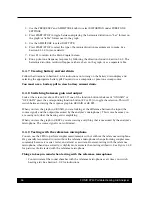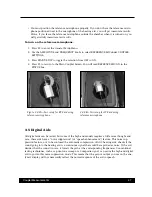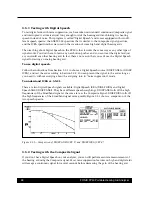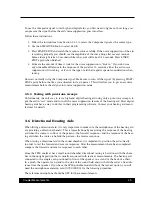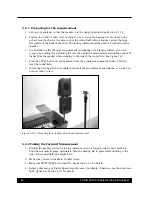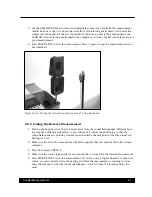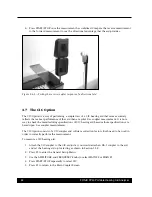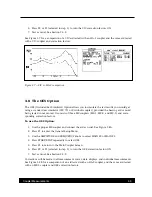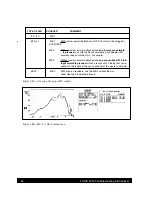
Automated Test Sequences
59
8. SPA/HFA FOG: Three frequency average of a full-on gain measurement at 50 dB SPL
9. REFTG TARGET and MEASURED: The calculated reference test gain and the actual measured
reference test gain
10. EQ INP NOISE: Equivalent input noise
11. RESP LIMIT and F1 and F2: The response limit level and the two frequencies where the
response curve crossed over this level
12. THD: The total harmonic distortion measurements
13. HFA-SPLITS: The three frequency average of the telecoil SPLITS curve
14. RSETS: The difference between the high frequency average of the response curve and the
SPLITS curve
15. BATTERY: Battery current drain
16. I/O CURVES: Input/output measurements at up to five different frequencies
Figure 4.1.4—ANSI 03 results
4.2 ANSI S3.22-1996
Although the ANSI S3.22 was revised in 1996, the FDA did not adopt this new version of the stan-
dard until March 2000. As a result, all hearing aids designed (or with significant design changes)
after March 17, 2000 must be labeled to the ANSI S3.22-1996 standard. All hearing aids manu-
factured today, but with no significant design changes since March 17, 2000, can continue to be
labeled to the ANSI S3.22-1987. See Section 4.3 for more details on ANSI 87.
4.2.1 Setting up the aid for testing
When possible, follow the procedure recommended by the hearing aid manufacturer when setting
up the aid to perform an ANSI test sequence. Otherwise, use the following guidelines:
• Set the controls of the aid (except the compression controls) to give the greatest possible out-
put and gain.


